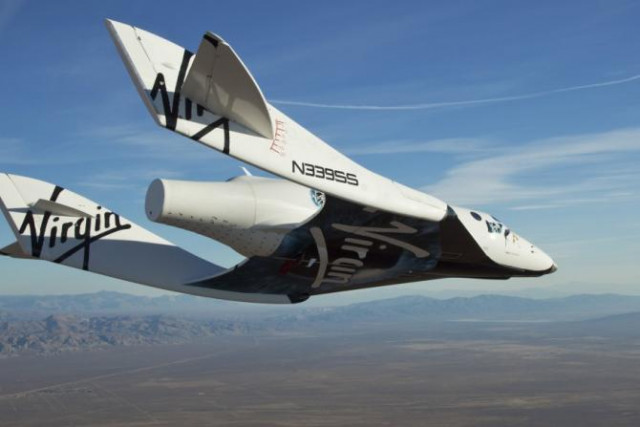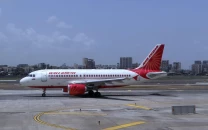High-flying tourists getting ready for space vacations
Space tourism companies are employing designs, including winged vehicles and rockets, to make space tourism a reality

Branson works to make space tourism possible. PHOTO: REUTERS
Virgin Galactic’s 'SpaceShipTwo' is designed to be flown by two pilots and carry up to six passengers on a suborbital trajectory to altitudes above 100 kilometres to give passengers a view of the Earth far below.
‘Hello, is this planet Earth?’ Astronaut dials wrong number on Christmas call from space
The space craft’s cabin is roomy enough for passengers to float during a few minutes of weightlessness before beginning an unpowered glide to a runway landing.
Hundreds of people have put down deposits of $250,000 for a chance to fly into space with Virgin Galactic, which plans to operate from Spaceport America in New Mexico.
Another company introducing space tourism is Amazon’s Blue Origin project, which is testing a vertical-takeoff rocket topped by a six-passenger capsule for suborbital hops. Blue Origin says during flights passengers will experience a few minutes of weightlessness after the capsule separates from the booster. Passengers will be able to leave their seats and float about the capsule before a signal tells them to be reseated for landing.
The company has chosen Florida for its base of operations. Details of space tourism operations have not been released.
SpaceX to launch rocket Dec 19, six months after blast
XCOR Aerospace is another company that has spent years developing a rocket plane named Lynx that is intended to be capable of making multiple flights each day with a pilot and one passenger aboard.
Unlike Virgin Galactic’s SpaceShipTwo, the Lynx will take off under its own power from a runway, climb towards space and then glide back to a runway landing. XCOR also plans flights surpassing an altitude of 100 kilometres.
In December, the company had announced the development of a propulsion system that used waste heat to drive essential engine parts, eliminating the need for large and heavy tanks of compressed gas.
The company says it has more than 350 clients. The price of booking a seat rose from $100,000 to $150,000 on January 1, but the company has not announced when flights will begin.
SpaceX Falcon rocket nails safe landing in pivotal space feat
“The fact is that we are in a process in which you just can’t rush things,” Lynx test pilot Harry van Hulten said in a press statement last fall.
World View is an Arizona company that plans to fly passengers to altitudes above 100,000 feet in a capsule suspended below a “parawing” and a helium balloon.
The trip would be to “near space”, avoiding the stress of G (gravity) forces endured during rocket flight, but still giving passengers a good view of the Earth. Unlike other space tourism vehicles; however, World View will be giving passengers the chance to spend two hours, instead of just a few minutes at the top of a suborbital trajectory, and even have a lavatory.
The two-member crew then begins the landing process by venting helium until the capsule descends to 50,000 feet. The balloon is then released and the par-awing allows the capsule to glide to a landing spot.
This article originally appeared on Fox News.



















COMMENTS
Comments are moderated and generally will be posted if they are on-topic and not abusive.
For more information, please see our Comments FAQ